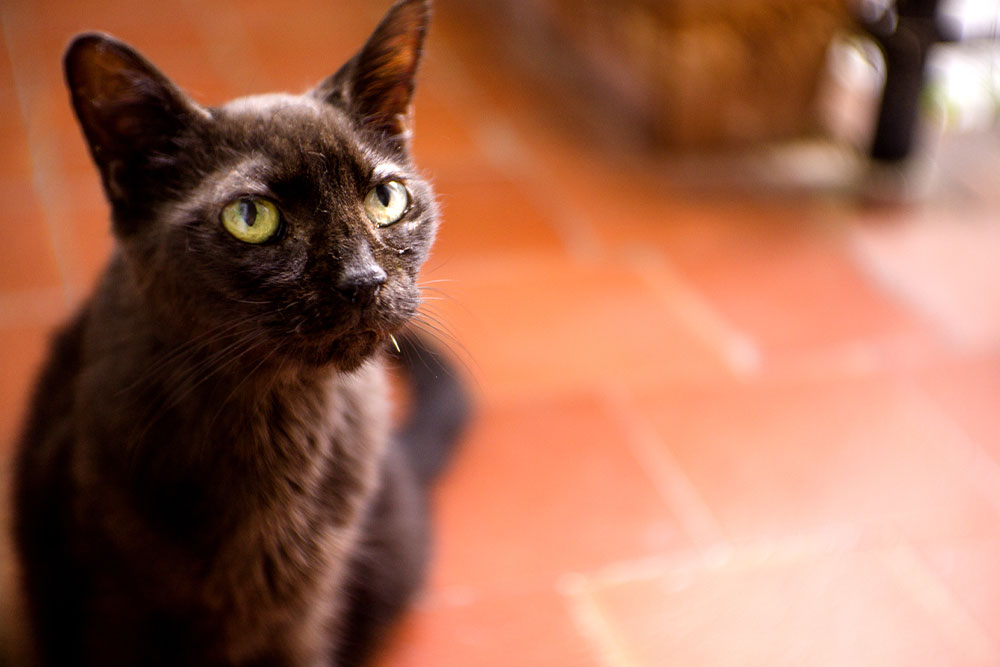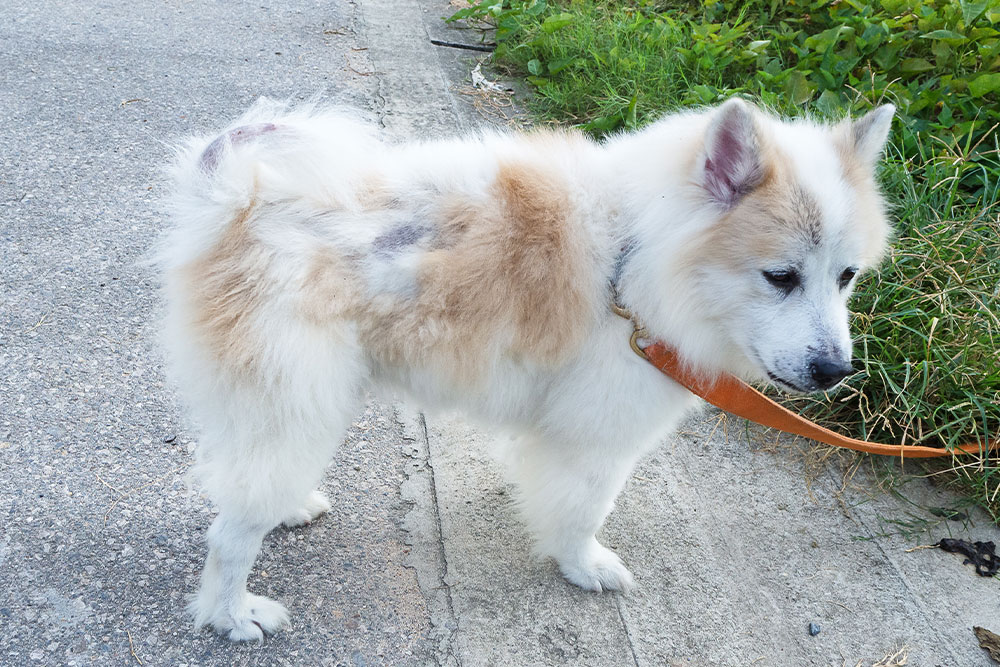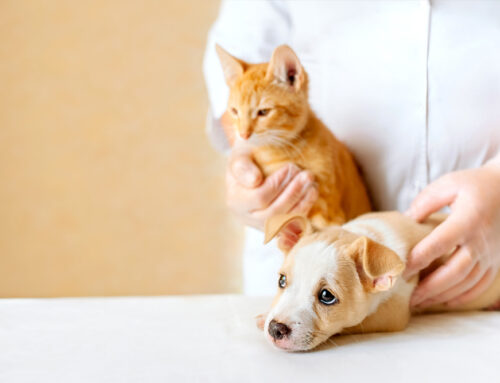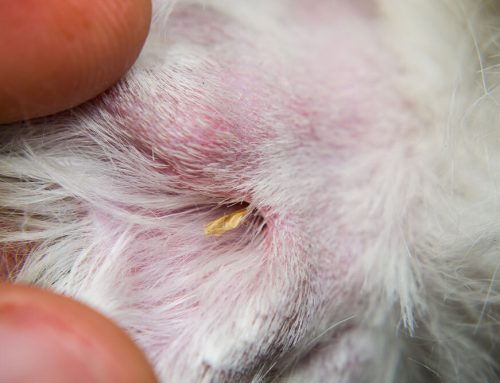Thyroid disorders are among the most frequently diagnosed hormonal conditions in dogs and cats—yet they’re often misunderstood. Whether your pet is slowing down unexpectedly or losing weight despite eating well, thyroid function could be the underlying issue.
At Krichel Animal Hospital in Keokuk, Iowa, we know how important early diagnosis and proper treatment are for managing thyroid disorders. In this guide, we’ll walk you through the signs of hypothyroidism and hyperthyroidism, what causes them, how they’re diagnosed, and what your options are for treatment and long-term management.
Learn more about our veterinary services
What Are Thyroid Disorders in Pets?
The thyroid gland plays a critical role in your pet’s health by producing hormones that control metabolism. A thyroid imbalance occurs when this gland produces too little hormone (hypothyroidism) or too much hormone (hyperthyroidism), resulting in a wide range of symptoms and complications.
- Hypothyroidism is most common in middle-aged to older dogs
- Hyperthyroidism typically affects senior cats
Hypothyroidism in Dogs
What Is It?
Hypothyroidism occurs when the thyroid gland doesn’t produce enough thyroid hormones, causing the metabolism to slow down.
Causes of Hypothyroidism
- Autoimmune thyroiditis (the most common cause in dogs)
- Thyroid tumors
- Iodine deficiency (rare with modern diets)
- Congenital defects in puppies
Signs to Watch For
- Weight gain without increased appetite
- Lethargy or decreased interest in activity
- Cold sensitivity (seeking warm areas or shivering)
- Hair loss or a dull, thinning coat
- Dry, flaky skin
- Recurrent skin or ear infections
These signs often appear slowly and can be mistaken for normal aging. Read more about canine hypothyroidism
Hyperthyroidism in Cats
What Is It?
Hyperthyroidism results from overproduction of thyroid hormones, causing a dangerously fast metabolism. It’s most often seen in cats over age 10.
Causes of Hyperthyroidism
- Benign thyroid tumors (adenomas)—responsible for 98% of cases in cats
- Thyroid carcinoma (rare but more aggressive)
- Diet and environmental factors may contribute, though not fully understood
Symptoms of Hyperthyroidism
- Weight loss despite increased appetite
- Increased thirst and urination
- Hyperactivity or restlessness
- Vomiting or diarrhea
- Rapid or irregular heart rate
- Unkempt or greasy coat
Learn more about hyperthyroidism in cats
How Thyroid Disorders Impact Pet Health
In Dogs (Hypothyroidism)
- Slowed metabolism impacts weight, energy, coat quality, and immune function
- Can contribute to infertility, chronic infections, or heart problems if left untreated
In Cats (Hyperthyroidism)
- The increased metabolic rate leads to muscle wasting and poor body condition
- High blood pressure (hypertension) and cardiac strain can result in heart failure
- Can unmask or worsen chronic kidney disease, making management complex
How Are Thyroid Disorders Diagnosed?
For Hypothyroidism
- Blood tests measuring total T4 and thyroid-stimulating hormone (TSH)
- Additional tests may include free T4 by equilibrium dialysis and thyroid autoantibody levels
- Baseline testing during wellness exams can help detect issues before symptoms appear
For Hyperthyroidism
- Total T4 levels are the initial screening test
- Thyroid imaging (ultrasound or nuclear scintigraphy) can confirm diagnosis and locate abnormal glands
- Ongoing monitoring is essential to track treatment effectiveness and catch complications early
Discover why regular vet visits are crucial
Treatment Options for Thyroid Imbalance

Hypothyroidism in Dogs
- Treated with daily oral thyroid hormone (levothyroxine)
- Most dogs show improvement in energy, coat quality, and weight within weeks
- Routine bloodwork is necessary to adjust dosage and monitor treatment success
Hyperthyroidism in Cats
- Methimazole (oral or transdermal) reduces hormone production
- Radioactive iodine therapy (I-131) is often curative with a single injection
- Surgical thyroidectomy may be recommended in some cases
- Prescription low-iodine diets (e.g., Hill’s y/d) are an option for select cats who cannot tolerate other treatments
Each option has pros and cons depending on the cat’s age, kidney function, and overall health.
Can Thyroid Disorders Be Prevented?
While there’s no guaranteed way to prevent thyroid disease, early detection can minimize complications.
Prevention & Monitoring Tips
- Annual wellness exams with bloodwork for senior pets
- Be alert to subtle changes in appetite, weight, and activity
- Understand breed predispositions—Golden Retrievers, Dobermans, and Beagles are at higher risk for hypothyroidism
- Older cats of all breeds are vulnerable to hyperthyroidism
Learn about preventive testing for senior pets
When to Contact Your Veterinarian
If your dog or cat is showing signs of:
- Unexplained weight gain or weight loss
- Sudden changes in energy or appetite
- Skin or coat abnormalities
- Vomiting or diarrhea
- Behavior changes or increased anxiety
Don’t wait—these may be early signs of thyroid imbalance or another metabolic condition.
Contact Krichel Animal Hospital for a consultation or to schedule a wellness exam.
How Krichel Animal Hospital Can Help
At Krichel Animal Hospital, we’re committed to helping pets live long, healthy lives. Our experienced veterinarians provide:
- Accurate diagnosis through comprehensive lab testing
- Customized treatment plans based on your pet’s needs
- Ongoing support to adjust medications and monitor long-term health
Visit our Services page to learn more about our diagnostic and endocrine care capabilities.
Thyroid disorders may be common, but they are highly manageable with the right veterinary care. Whether your pet is slowing down or acting unusually hyper, a simple blood test could reveal the answer.
By recognizing symptoms early, scheduling routine wellness checks, and staying consistent with treatment, you’ll give your pet the best chance at a vibrant, healthy life.
Ready to learn more or schedule your pet’s thyroid screening?
Contact us today — we’re here to help.







Leave A Comment